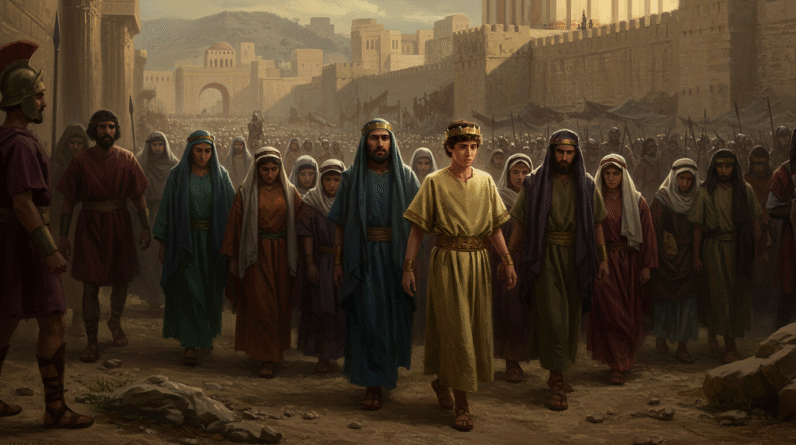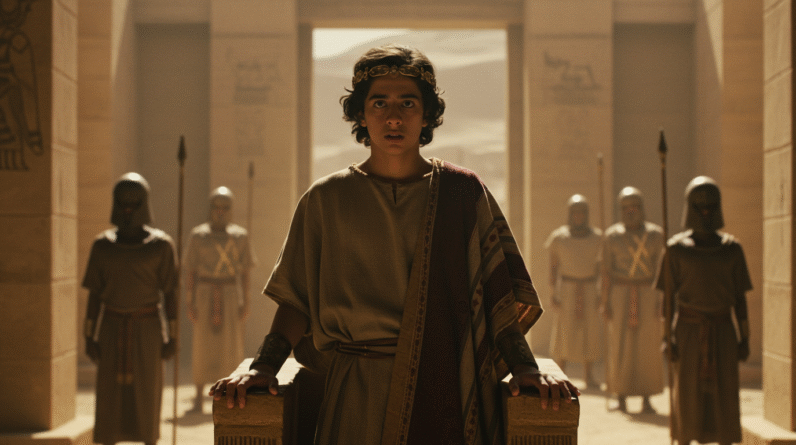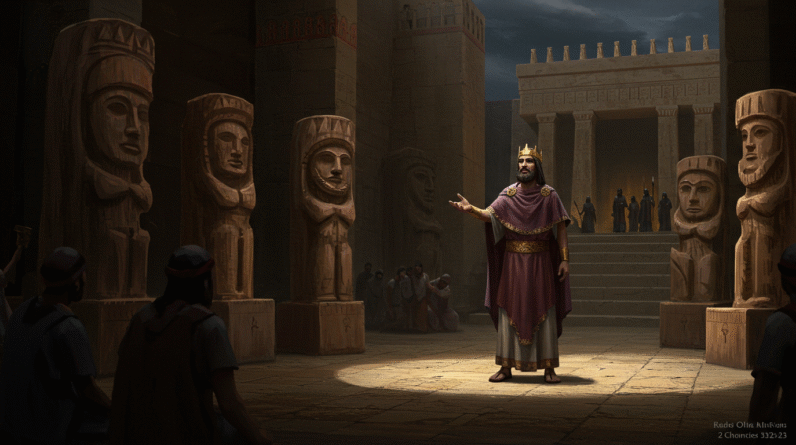The Splendor of Solomon’s Temple: A Glimpse of God’s Glory
When you find yourself wandering through the vast corridors of history, Solomon’s temple emerges as a shimmering beacon of ancient faith, splendor, and divine presence. Constructed by King Solomon, the revered king of Israel, this temple was more than just an architectural marvel; it was a testament to human devotion and an embodiment of the glory of God. Buckle in as you explore the beauty, significance, and the very essence of Solomon’s temple.
The Origins of Solomon’s Temple
Solomon’s temple was a product of divine instruction, passed from God to King David, Solomon’s father. Although David harbored the desire to build a house for the Ark of the Covenant, it was Solomon who fulfilled this dream, reflecting not only a personal promise but a divine prophecy. 1 Kings 6:1-38 details the temple’s construction, intricately describing its design and purpose. It was to be a sacred space where heaven and earth would intersect, a focal point for worship, and a physical manifestation of God’s promise to dwell among His people.
Architectural Brilliance and Divine Design
You might be bewildered by the sheer architectural ingenuity and grandeur of Solomon’s temple. Spanning approximately 90 feet long, 30 feet wide, and 45 feet high, its dimensions were awe-inspiring for that era. The temple was meticulously constructed using the finest materials: cedar from Lebanon, gold overlays, and stone quarried with precise craftsmanship. Each detail was deliberate, reflecting not only aesthetic splendor but also a deeper, spiritual significance.
The temple’s layout mirrored the tabernacle that Moses constructed, featuring the Outer Court, the Holy Place, and the Most Holy Place, or the Holy of Holies. This tripartite structure symbolized different levels of sanctity and intimacy with God. The Most Holy Place housed the Ark of the Covenant, representing God’s throne on earth. Entry into this space was restricted to the high priest, once a year on the Day of Atonement, reflecting the holiness and reverence due to God.
The Deeper Spiritual Meaning
The magnificence of Solomon’s temple wasn’t in its physical beauty alone; it embodied a deeper spiritual resonance. Each element held symbolic meaning, forging connections between earthly worship and heavenly realities. The temple symbolized God’s covenant with Israel, His chosen people, and served as a constant reminder of His presence and providence.
The offering of sacrifices within the temple was central to Israelite worship. These sacrifices, meticulously detailed in the Torah, foreshadowed the ultimate sacrifice of Jesus Christ. In Hebrews 9:11-14, the New Testament parallels the sacrificial system upheld in Solomon’s temple to Christ’s once-and-for-all offering, highlighting the temple’s prophetic significance.
The Glory of God’s Presence
One cannot discuss Solomon’s temple without marveling at the manifestation of God’s glory, often referred to as the Shekinah. Upon the temple’s completion, Solomon prayed, and God’s glory filled the temple, signifying His approval and presence. 2 Chronicles 7:1-3 describes this divine moment—fire descended from heaven and consumed the burnt offerings, and the glory of the Lord filled the temple.
This uncontainable glory emphasized that while God was present among His people, He also transcended human constructs. The divine presence within Solomon’s temple was both a comforting affirmation and a humbling reminder of God’s incomprehensible majesty.

Solomon’s Temple as a Model for Worship
In our modern context, Solomon’s temple provides rich insight into worship, inviting you to ponder how you honor God today. While you may not have a physical temple adorned in gold and cedar, the apostle Paul in 1 Corinthians 6:19-20 likens your body to a temple of the Holy Spirit, urging you to glorify God through your actions and commitments.
The community aspect of worship, central to the life around Solomon’s temple, also offers valuable lessons. Worship was a collective experience, bringing together individuals under a unified purpose—to honor and draw near to God. Today’s congregational settings echo this structure, serving as spaces of communal prayer, reflection, and sacramental life.
Lessons in Leadership and Legacy
Reflecting on Solomon’s temple also introduces you to themes of leadership and legacy. King Solomon’s role as a leader wasn’t merely about political governance; it encompassed spiritual stewardship. His commitment to building the temple highlights the importance of prioritizing divine commands and communal well-being over personal glory.
Your endeavors, though seemingly secular, can impact future generations, much like Solomon’s temple, which stood as a symbol of faithfulness long after its physical demise. Aligning your goals with divine purposes creates lasting legacies reflective of God’s overarching story.
Historical Significance and Cultural Impact
For centuries, Solomon’s temple served as the epicenter of Jewish faith. It was a place where key religious festivals were celebrated, and priests conducted rituals integral to Israelite life. Even after its destruction in 586 BCE by the Babylonians, the temple retained its cultural and religious significance, later inspiring the Second Temple, which stood during Jesus’s time.
Today, the Western Wall, a remnant of the Second Temple, is a sacred site for Jews and a symbol of enduring faith and hope amidst adversity. It represents continuity, reminding you of the lasting impact Solomon’s temple has on faith communities worldwide.
Solomon’s Temple in Art and Literature
The allure of Solomon’s temple extends beyond religious texts into the realms of art and literature. Throughout history, artists and writers have drawn inspiration from its splendor, painting elaborate depictions and composing intricate narratives. These creative expressions serve not only to preserve the temple’s legacy but to invite deeper contemplation on divine mysteries.
As you engage with these artistic interpretations, consider how they reflect the yearning for transcendence, beauty, and a connection to something greater than oneself. The temple’s depiction in various art forms continues to evoke wonder, illustrating its uninterrupted influence on human imagination.
The Enduring Message of Solomon’s Temple
Even though Solomon’s temple no longer stands, its spiritual principles and beauty continue to resonate. It challenges you to ponder how you approach the sacred, urging reverence, gratitude, and intentionality in your spiritual journey. The temple’s design and purpose illuminate the path to honoring God in a world that often overlooks the divine.
By embracing the enduring messages of Solomon’s temple, you contribute to a rich tapestry of faith that transcends time and space, connecting with generations past and present.
Conclusion: Embracing the Legacy
As you navigate your spiritual landscape, let Solomon’s temple serve as a guide—one that beckons you to honor God with a heart overflowing with devotion and wonder. Whether through prayer, community, or art, every expression of faith becomes a sacred offering, reflecting the splendor and glory of a temple long-standing in memory and spirit.
Explore More
For further reading and encouragement, check out these posts:
👉 7 Bible Verses About Faith in Hard Times
👉 Job’s Faith: What We Can Learn From His Trials
👉 How To Trust God When Everything Falls Apart
👉 Why God Allows Suffering – A Biblical Perspective
👉 Faith Over Fear: How To Stand Strong In Uncertain Seasons
👉 How To Encourage Someone Struggling With Their Faith
👉 5 Prayers for Strength When You’re Feeling Weak

📘 Jesus and the Woman Caught in Adultery – Grace and Mercy Over Judgement
A powerful retelling of John 8:1-11. This book brings to life the depth of forgiveness, mercy, and God’s unwavering love.
👉 Check it now on Amazon
As a ClickBank Affiliate, I earn from qualifying purchases.
Acknowledgment: All Bible verses referenced in this article were accessed via Bible Gateway (or Bible Hub).
“Want to explore more? Check out our latest post on Why Jesus? and discover the life-changing truth of the Gospel!”








